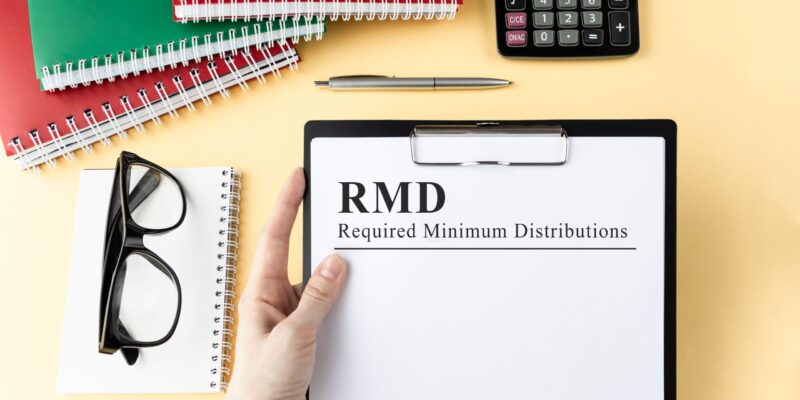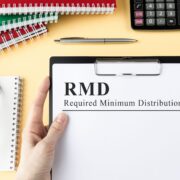Questions regularly emerge about the appropriate method to deal with the required minimum distribution (RMD) in the year of death of an individual retirement account owner. Here is what advisers require to know to assist their customers browse this complex set of guidelines.
Death After the Required Beginning Date
The RMD for the year of death will just require to be taken if the individual retirement account owner died on or after the required start date (RBD). The RBD is April 1 of the year following the year the individual retirement account owner reaches age 72. If an IRA owner dies before that date, there is no RMD required for the year of death. This is still true even if the individual retirement account owner is currently 72 and even if a part of the expected RMD has already been taken.
A year-of-death RMD is never needed from a Roth IRA. This is since all Roth individual retirement account owners are thought about to have actually died prior to their RBD. Absolutely nothing needs to come out in the year of death.
The Beneficiary Should Take the RMD
The IRA beneficiary must take the year-of-death RMD. This is a location of great confusion. If the year-of-death RMD was not currently taken by the individual retirement account owner, it should be taken by the beneficiary. It is not paid to the IRA owner’s estate unless the estate is named as the recipient.
Charge to the confusion, the INTERNAL REVENUE SERVICE verified this rule in policies and in Earnings Judgment 2005-36. In public conferences, internal revenue service guideline authors have actually also mentioned this position, despite the fact that the concern of WHO takes the necessary distribution is technically beyond the scope of the internal revenue service withdrawal guidelines. This is due to the fact that under state law, the minute the IRA owner dies, the balance in the individual retirement account comes from the beneficiary, NOT to the estate. The estate could have various beneficiaries than those noted on the individual retirement account beneficiary designation kind. The truth that the recipient does not need to withdraw the whole account the minute after the individual retirement account owner passes away does not make the account any less his. The beneficiary will likewise pay the tax on the circulation. It will be reported on the beneficiary’s personal income tax return (Form 1040), not on Kind 1041 (the estate’s earnings tax return).
Determining the Year of Death RMD
The RMD for the year of death is calculated as if the individual retirement account owner had lived. In many cases, this suggests utilizing the Uniform Life time Table. The year-of-death RMD can be aggregated with other acquired IRAs, however there are limits. These limitations are the same that apply to any aggregation of RMDs by recipients. The acquired Individual retirement accounts should be the very same type and acquired by the exact same beneficiary from the same IRA owner.
Any modifications put in place by the SECURE Act to the rules for acquired Individual retirement accounts do not alter the requirement that the year-of-death RMD need to still be taken by the beneficiary. In the years that follow the year of death, the beneficiary will change to the Single Life Span Table if annual RMDs are required.
Surviving Partners
The regulations are clear that even a spouse beneficiary does not get a pass when it comes to the year-of-death RMD. It should be paid out or there will be a charge. However, a spouse who is doing a spousal rollover by transfer or by dealing with the account as her own does have some versatility. The IRS only cares that the year-of-death RMD is taken. It does not care from whose account the RMD is distributed.
A spouse recipient can move the whole account to an IRA in her own name or treat the account as her own and after that take the RMD from that account. The RMD is computed the same method a year-of-death RMD is always computed– as if the IRA owner had lived.
However, if the spousal rollover is done by a 60-day rollover (which is unusual but does take place from time to time), there is no flexibility– the RMD should be paid from the departed spouse’s individual retirement account as a death circulation. Since it is an RMD, it is not qualified for rollover. This is one more factor to prevent 60-day rollovers.
New SECURE Act Relief
If the year-of-death RMD is not taken, there is a 50% penalty. This has actually always seemed unfair, due to the fact that depending upon precisely when an IRA owner passed away, there might not be much time for the beneficiary to take the RMD prior to the Dec. 31 due date.
The proposed IRS protect Act guidelines provide some relief. The proposed guidelines enable an automatic waiver of the 50% penalty as long as the year-of-death RMD is taken by the beneficiary’s tax filing due date, including extensions. This waiver will be very handy for recipients who discover themselves in tight situation with time when an IRA owner passes away near completion of the year without taking the RMD for that year. As long as they remove the year-of-death RMD by their tax-filing deadline, consisting of extensions, the charge will be waived automatically.
A beneficiary who fails to take a year-of-death RMD, even by that extended deadline, still has a prospective treatment. He can take the missed RMD and file Type 5329 and request for a waiver of the penalty. The internal revenue service has normally been ready to grant these requests.






















Comments